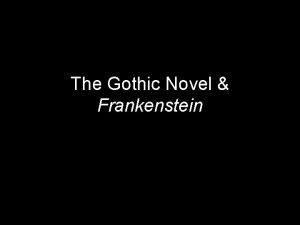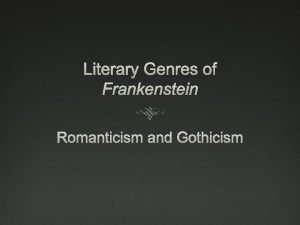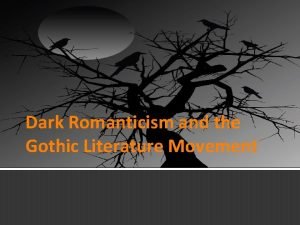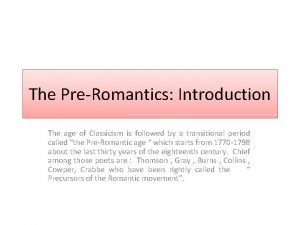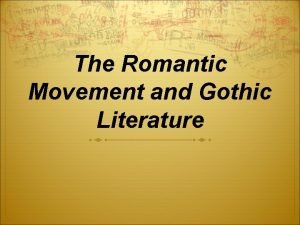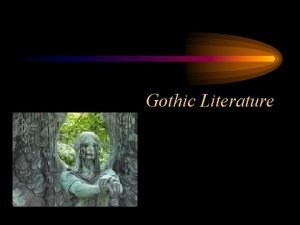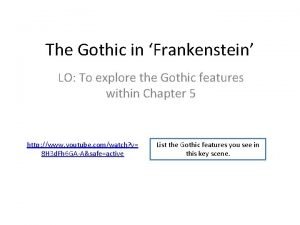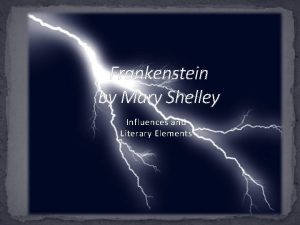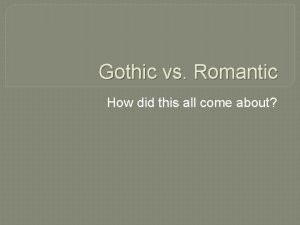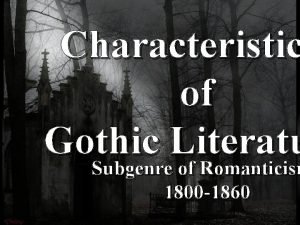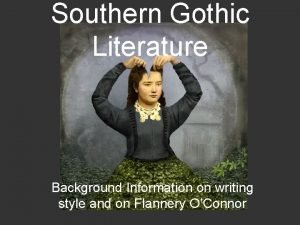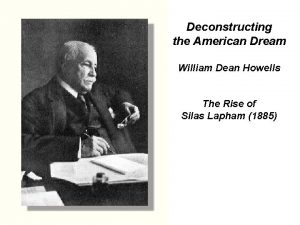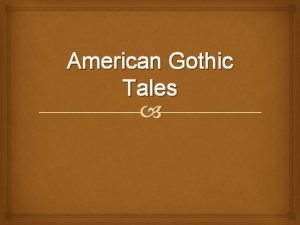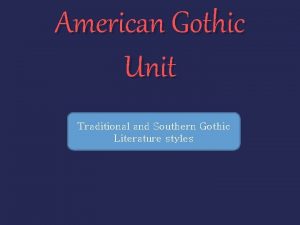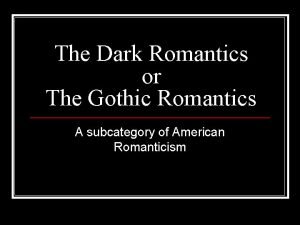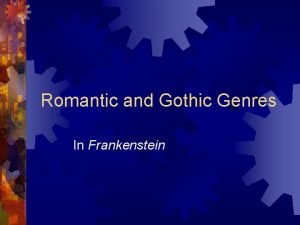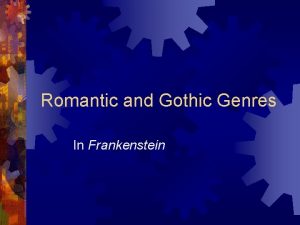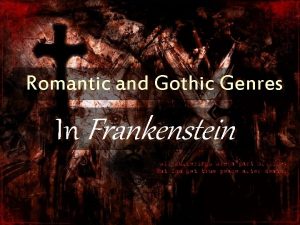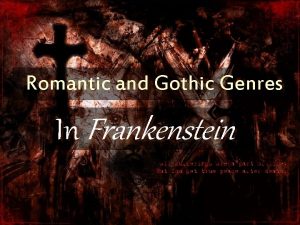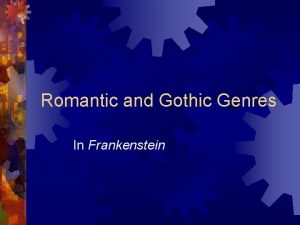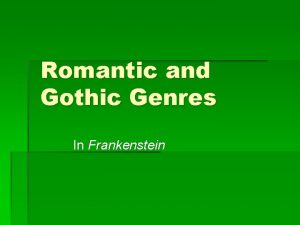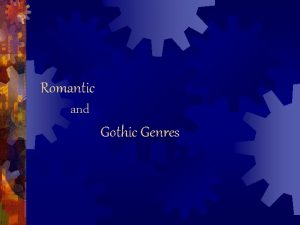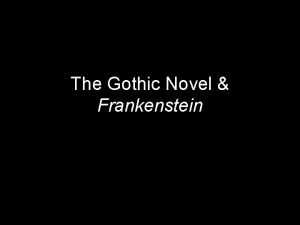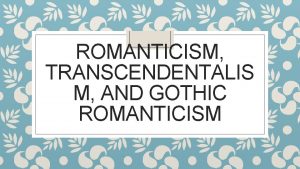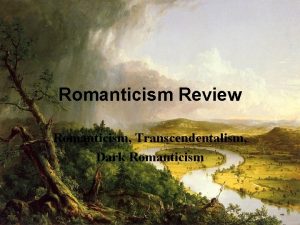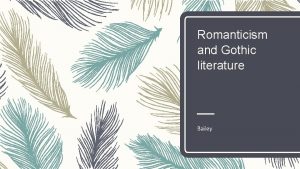Romantic and Gothic Genres In Frankenstein Romanticism Definition


















- Slides: 18

Romantic and Gothic Genres In Frankenstein

Romanticism Definition: a movement in the arts and literature that originated in the late 18 th century, emphasizing inspiration, subjectivity, and the primacy of the individual.

Romanticism l The movement validated strong emotion as an authentic source of aesthetic experience. Caspar David Friedrich, Wanderer above the Sea of Fog, 1818

Romanticism • Victor Hugo called Romanticism “liberalism in literature. ” It freed the artist and writer from restraints and rules.

Romanticism Characteristics: • Love of nature • An interest in the past • Mysticism • Individualism

Romanticism More Characteristics: • Interest in human rights • Interest in the Gothic

Supernatural And Gothic Literary Themes Supernatural motifs appear throughout the literary genre labeled Gothic.

Gothic literature derives name from its similarities to the Gothic medieval cathedrals. l The Goths were a barbarian tribe from what is now Germany. l its

l Gothic Prominent features of Gothic fiction include terror (both psychological and physical), mystery, the supernatural, ghosts, haunted houses and Gothic architecture, castles, darkness, death, decay, doubles, madness, secrets, and hereditary curses.

Supernatural / Gothic Literary Motifs A motif is a repeated theme, image, or literary device. Look for these common supernatural/Gothic motifs in Frankenstein.

The Double or Doppelganger (German for "double-goer"):

Forbidden Knowledge or Power/ Faust Motif: Forbidden knowledge/power is often the Gothic protagonist’s goal.

Monster/Satanic Hero/Fallen Man: The hero in Gothic literature is often a "villain

Multiple Narrative / Spiral Narrative / Frame Narrative Method: The story is frequently told through a series of secret manuscripts or multiple tales.

Dreams/Visions: Terrible truths are often revealed to characters through dreams or visions.

Signs/Omens: Reveal the intervention of cosmic forces.


 Frankenstein gothic novel
Frankenstein gothic novel Frankenstein
Frankenstein What is dark romanticism in literature
What is dark romanticism in literature Pre romantic period
Pre romantic period Romantic and gothic literature
Romantic and gothic literature Gothic vs romantic
Gothic vs romantic Romantic hero frankenstein
Romantic hero frankenstein Romanticism
Romanticism The romanticism (1795 — 1835) what is romanticism
The romanticism (1795 — 1835) what is romanticism Gothic elements in frankenstein
Gothic elements in frankenstein Mary shelley literary influences
Mary shelley literary influences Romantic vs gothic
Romantic vs gothic Gothic vs romantic
Gothic vs romantic Gothic vs romanticism
Gothic vs romanticism Tone in gothic literature
Tone in gothic literature William dean howells editha summary
William dean howells editha summary American gothic movement
American gothic movement American gothic authors
American gothic authors Dark romanticism characteristics
Dark romanticism characteristics
